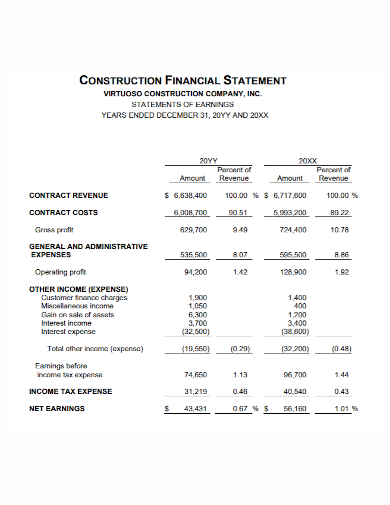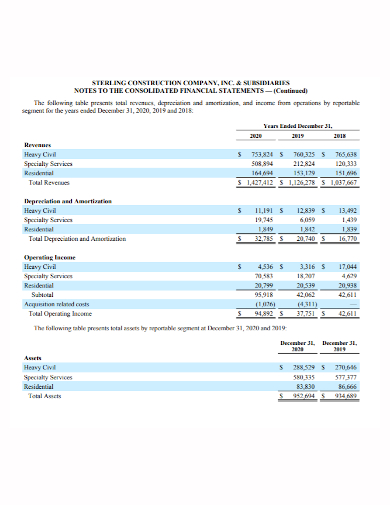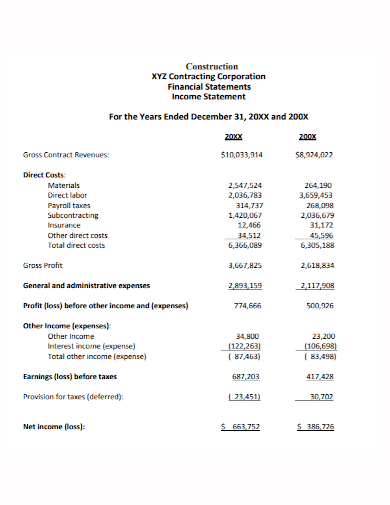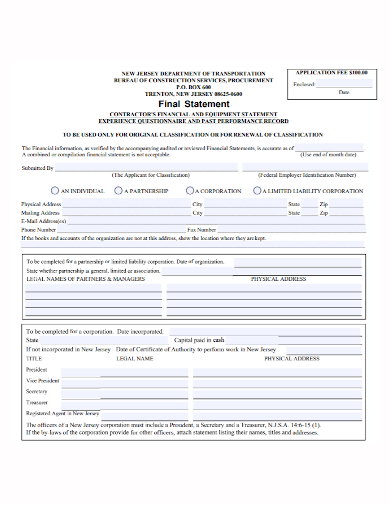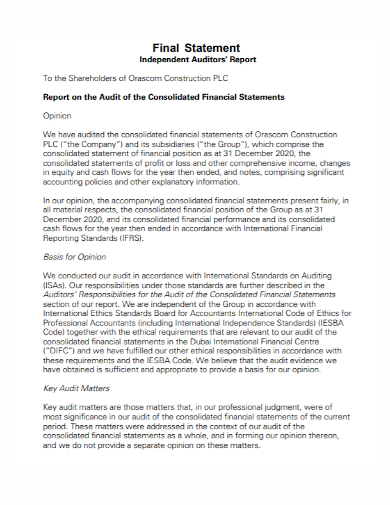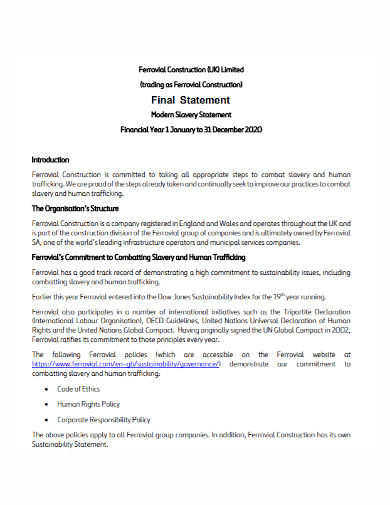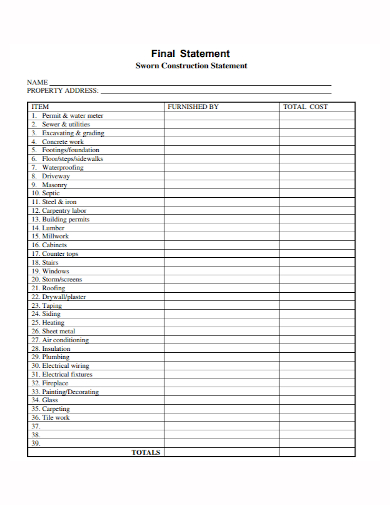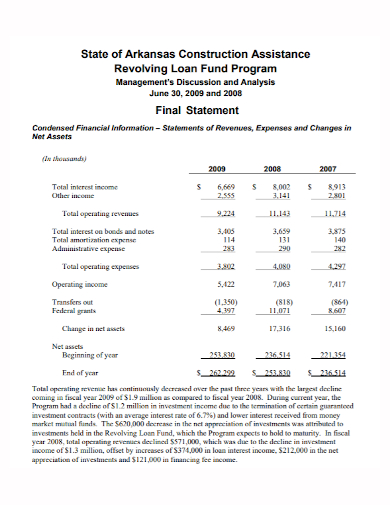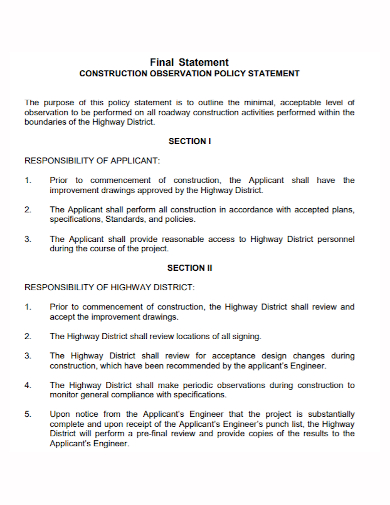The contractor is normally obligated to supply the quantity surveyor with all papers essential for the final statement preparation not sooner than six months following completion of the works under the contractual provisions. The quantity surveyor must create and determine the final account balance and transmit it to the contractor within three months after receiving these documents. The vast majority of the final account will be assessed labor priced at the initial invoiced rates. If the assessor for the contractor has grounds to believe the correctness of any of the initial billed items, the quantity surveyor might demand that the work be evaluated on-site.
10+ Construction Final Statement Samples
Construction contracts usually include a means for making the final due to the contractor when the work indicated in the contract is completed. This payment is often provided at the end of the specified term, assuming that any patent faults have been corrected. The method of calculating and settling on any modifications to the contract sum (the amount initially stipulated in the contract payable to the contractor for the completion of the project) in order to establish the amount of the final payment is known as final account preparation. The final amount payable is then specified in the certificate of completion (or final statement).
1. Construction Final Statement Template
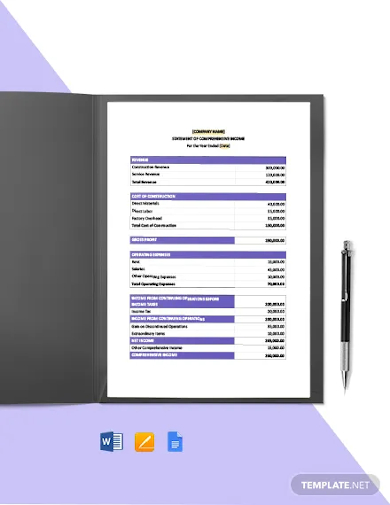
2. Construction Statement of Final Account Template
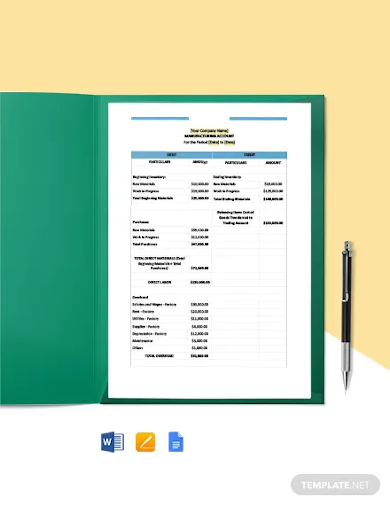
3. Construction Company Final Statement
4. Construction Subsidiary Final Statement
5. Construction Contracting Final Statement
6. Construction Contractor Final Statement
7. Construction Audit Final Statement
8. Construction Organisation Final Statement
9. Construction Sworn Final Statement
10. Construction Program Final Statement
11. Construction Policy Final Statement
Quantity surveyors usually compile final accounts in the most appropriate manner for the construction task, beginning with the initial contract sum. While the contract may assign duty for final account preparation to the employer, the optimum way is for both the company’s building surveyor and the contractor’s quantity surveyor to collaborate to produce an agreed-upon account.
The final account statement is signed by both the employer (or the employer’s representative) and the contractor to indicate that the payment certificates figure illustrates the full and final payment of all charges, etc. The final account will be settled, resulting in a final account statement, which will allow the contracting authority to provide the final statement.
When preparing the final account, keep the following in mind:
- Creating a clear statement that includes the contract sum as well as all relevant changes.
- Following the terms and conditions of the contract in question.
- All items were thoroughly evaluated, with adjustments made for deviations, tentative sums, and re-measured tasks, among other things.
- Work performed on a day-to-day basis is covered.
- Appropriately assess and incorporate loss and expense claims/reimbursement.
- Where appropriate, variations are included.
- Written confirmation of the contractor’s acceptance of the final account estimate.
The net amount for every variance, as well as amounts payable to each nominated subcontractor and nominated supplier, must be generally separated in the final account. When producing the final account, the employer’s assessor should allow the contractor’s quantity surveyor to be around when metrics and specifications are collected or documented, so that the document is generated in close collaboration with the contractor to minimize potential conflicts.
FAQs
What are some of the key items to consider in incorporating the final account?
- According to the applicable subcontract conditions, the total amounts of nominated subcontractors were eventually adjusted.
- When a contractor tenders for work that was supposed to be done by a nominated subcontractor and their tender is accepted, the tender value is appropriately adjusted.
- Any monies owed to nominated suppliers, excluding cash discounts and VAT.
- Profit made by the contractor on the above amounts.
- Any statutory fees and charges, opening and testing, royalties and patent rights, and insurances that the employer is responsible for.
What are some reasons why contract sum may need to be adjusted?
- Variations.
- Fluctuations.
- Prime cost figures
- Provisional figures
- Nominated subcontractors and suppliers receive payments.
- Fees imposed by law.
- Payments linked to the works’ opening and testing.
- Expense and loss
- Damages have been calculated and liquidated.
- Contra claims imposed as a result of the contractor’s operations (for example, a third-party claim arising from contractor carelessness or breach of contract, such as flooding a neighbor’s property).
- Any remaining detention is released.
Postponements in final account payment cost the contractor money, and the entire time the employer wants to know what their complete financial contribution is. The project manager and cost manager have a contract terms obligation to complete the final account by the stipulated deadline, and the contractor should provide all required services in the timely provision of subcontractors’ and suppliers’ accounts, contract of quantification and costs, and supply of all requisite supporting data.
Related Posts
FREE 12+ Construction Project Report Samples
FREE 11+ Sample Project Completion Reports
FREE 10+ Project Manager Proposal Samples
FREE 10+ Project Financial Analysis Samples
FREE 10+ Sample Statement of Account
FREE 10+ Financial Analysis Report Samples
FREE 7+ Sample Business Statement
FREE 44+ Sample Statement Forms
FREE 25+ Company Profile Samples
FREE 17+ Construction Management Plan Samples
FREE 10+ Recommendation Report Samples
FREE 10+ Grant Proposal Problem Statement Samples
FREE 10+ Sample Construction Loan Agreement
FREE 10+ Road Project Proposal Samples
FREE 9+ Real Estate Development Agreement Samples

